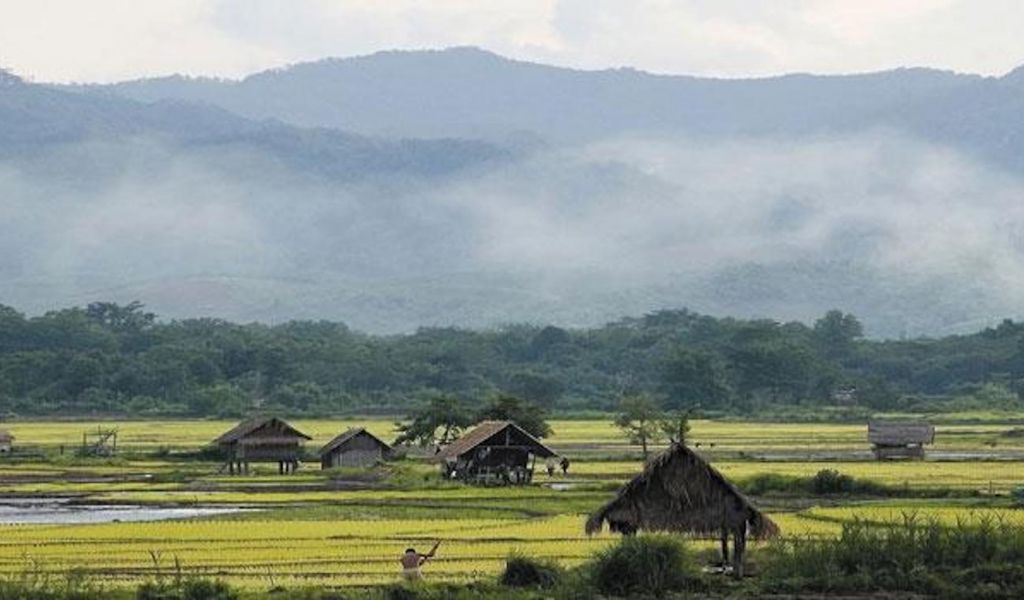Community spirit eases the workload at harvest time

The people of Namdee village in Namtha district don’t need money when it comes to harvest time because, unlike most other places in Laos, they don’t have to pay for hired labour. At a large rice farm surrounded by green hills, where the fields are owned by many Namdee villagers, I saw at least 20 people harvesting rice and listening to music played on a radio. The scene revived long-buried memories from years ago of times when people didn’t have to spend money on hired labour. I fell in with the group and spent about two hours talking to them and helping them to cut the rice. They said they never had to pay their friends and neighbours to harvest the rice because they all banded together to bring in each farmer’s rice crop on individual plots of land. When the rice is ready to harvest, the farm owner just tells everyone in the village and then one member of each family comes to help. It takes only one or two days to finish cutting the rice as there are many people involved and they all set to work with scythes to get the job done as quickly as possible.
During the harvesting, they always carry on a conversation which makes the work fun and sometimes they sing when the radio plays their favourite song. Listening to music on the radio while working is an old tradition on Lao farms and sometimes people call the radio DJ to request a particular song.
Work hours are fairly precisely set each morning and afternoon. The general rule is that work begins in the morning at 7:30 am and ends at 11:30 am, then resumes at around 2 pm and continues until 5 pm. As everyone has to toil in the hot sun, they sometimes need a break for a drink. But the rice farm in Namdee village doesn’t have any big trees to provide shade and the huts are quite far away, so people just take a break for five minutes or so. The owner of the farm everyone is working on must provide lunch and dinner for those who are helping. Usually, they cook some fish that has been caught on the farm or sometimes make a hearty chicken soup.
But it’s unusual to see this kind of collective farm work in Laos these days, and most farmers have to pay people to harvest their crops. The going rate for a hired labourer is 70,000 kip a day. One farmer in Namdee village said they sometimes have to pay for extra help if the crop is very big and they want to get the rice cut quickly, but they would never hire workers from their village. Namdee is in a rural area of Namtha district, six kilometres from the main town. The people here are Lao Huay (Lanten) and still maintain their traditional way of life. Among other interesting activities, this is a good place to observe the making of paper from bamboo bark. Behind the village is the entrance to the Nam Dee waterfall. This area has several places worth visiting, including a small handicraft shop managed by the villagers. The village runs home-stays, enabling visitors to experience the Lanten lifestyle, eat the local food, learn how to make paper from bamboo, and participate in the day-to-day work of their host family. The villagers not only help each other at harvest time and to plant rice; they also help each other with house building.
One of the reasons why this cooperative lifestyle persists is because the village is poor, but it’s heartwarming to see the community spirit that exists here. The people are truly kind and helpful to each other, which is different from so many other places today.
Information source: Vientiane Times.
